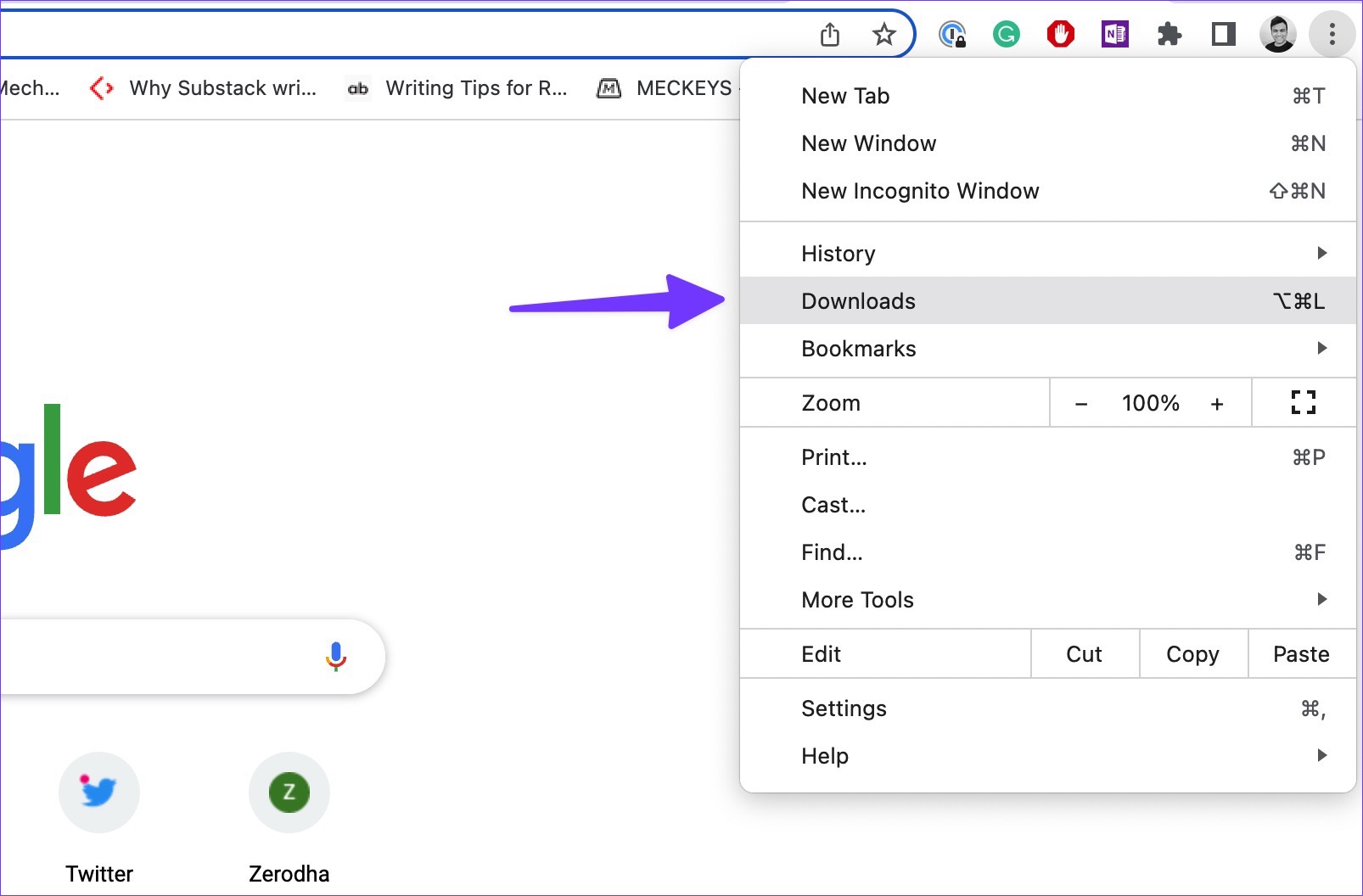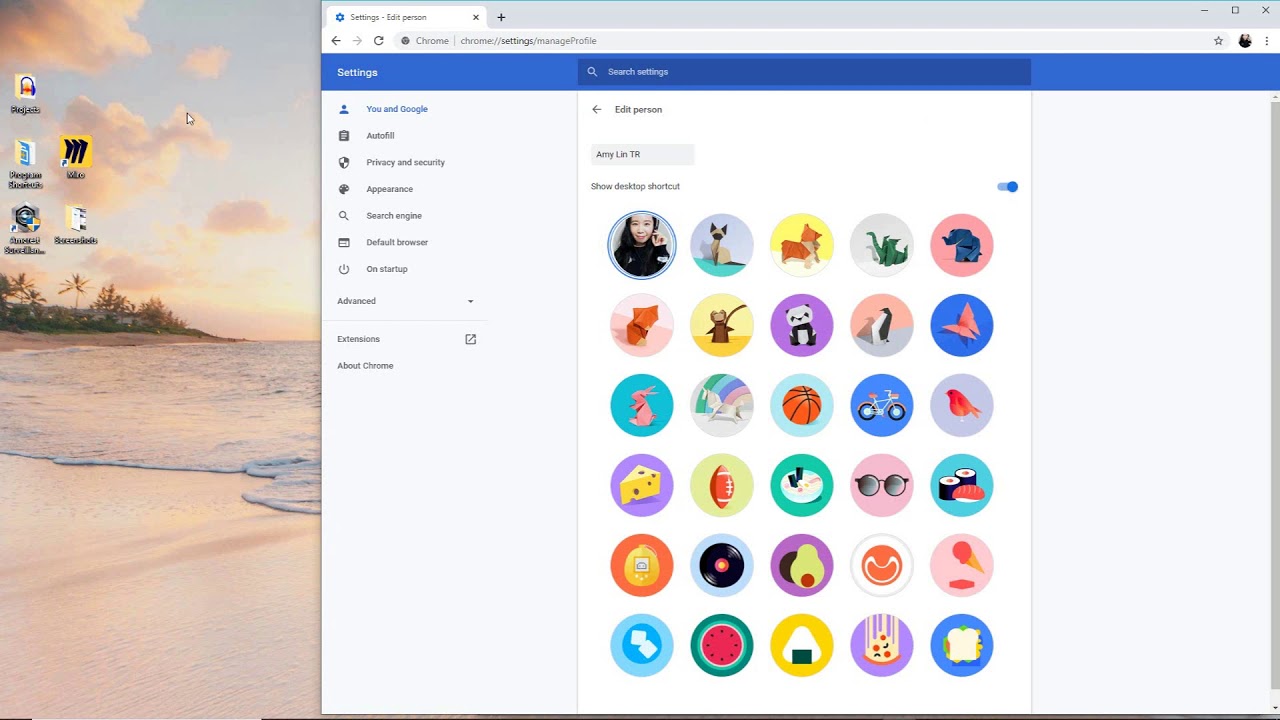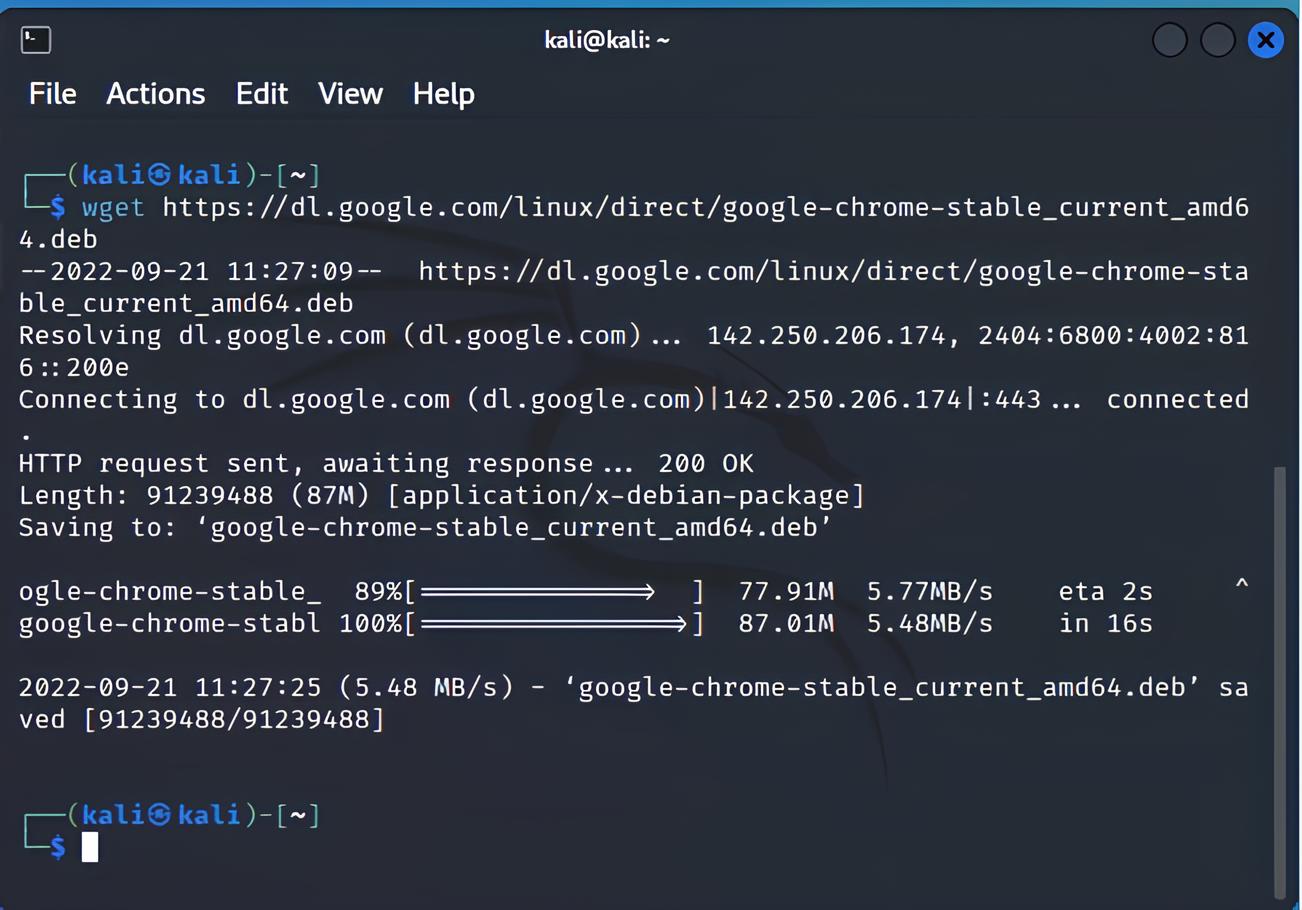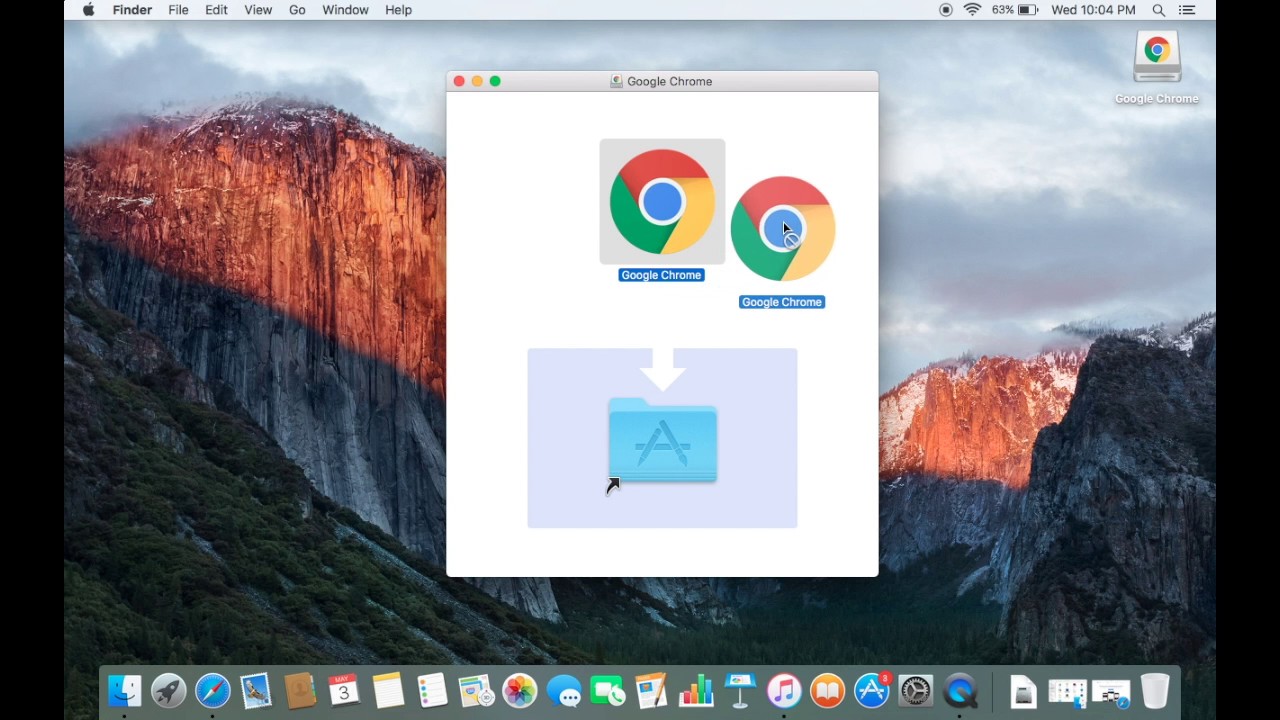Introduction
Google Chrome is one of the most popular web browsers in the world, known for its speed, simplicity, and user-friendly interface. It offers a plethora of features to enhance the browsing experience, including a seamless download management system. Whether you're downloading a PDF document, a software installer, or an image file, Chrome provides a convenient way to access and organize your downloads.
In this article, we will delve into the intricacies of finding, accessing, and managing your downloads on Google Chrome. From locating your recent downloads to customizing the download location and effectively managing your downloaded files, we will explore the various aspects of Chrome's download functionality. By the end of this guide, you will have a comprehensive understanding of how to navigate and optimize the download process within the Chrome browser.
Let's embark on this journey to uncover the hidden gems of Chrome's download management, empowering you to make the most of your browsing experience. Whether you're a seasoned Chrome user or a newcomer to the world of web browsers, this article will equip you with the knowledge and insights to streamline your download workflow and maximize the utility of Google Chrome.
Finding Downloads on Google Chrome
When you download files from the internet using Google Chrome, it's natural to wonder where these files end up on your computer. Chrome simplifies this process by providing a straightforward method to access your downloads. Whether you've just downloaded a presentation for work, a music album, or a software update, locating your downloads in Chrome is a breeze.
To find your recent downloads, you can start by clicking on the three-dot menu icon in the top-right corner of the Chrome window. From the dropdown menu, select "Downloads." Alternatively, you can use the keyboard shortcut "Ctrl + J" (or "Cmd + J" on Mac) to quickly access your recent downloads. This action opens the Downloads page, displaying a list of your downloaded files, along with relevant details such as file name, size, and download status.
Upon accessing the Downloads page, you'll notice that the files are organized chronologically, with the most recent downloads appearing at the top of the list. This intuitive layout allows for easy navigation and quick access to your downloaded content. If you're looking for a specific file, you can utilize the search bar at the top of the Downloads page to quickly locate it by entering keywords or the file name.
Furthermore, Chrome provides the option to show the downloaded file in the folder where it's saved on your computer. This feature is particularly useful when you need to access the file directly from its storage location or organize it within your file system. By clicking on the "Show in folder" link next to a downloaded file, Chrome opens the file explorer, highlighting the specific location where the file is stored.
In addition to the Downloads page, Chrome also offers a convenient way to monitor the download progress of ongoing downloads. When you initiate a download, a status bar appears at the bottom of the Chrome window, displaying the progress of the download. Once the download is complete, you can click on the file name in the status bar to open it, or you can access it later from the Downloads page.
In essence, Google Chrome streamlines the process of finding and accessing your downloads, ensuring that you can effortlessly retrieve your downloaded files and manage them according to your preferences. With its user-friendly interface and intuitive design, Chrome empowers users to navigate their downloads with ease, enhancing the overall browsing experience.
By familiarizing yourself with the process of finding downloads on Google Chrome, you can optimize your workflow and leverage the full potential of Chrome's download management capabilities. Whether you're a casual internet user or a productivity enthusiast, Chrome's seamless download functionality caters to a diverse range of user needs, making it a reliable companion for accessing and organizing downloaded content.
Changing Download Location
Customizing the download location in Google Chrome allows you to exert greater control over where your downloaded files are stored on your computer. By default, Chrome saves downloaded files to the "Downloads" folder within your user profile directory. However, you may prefer to save specific file types or categories of downloads to different locations for organizational or accessibility purposes.
To change the default download location in Google Chrome, you can follow these simple steps:
-
Access Chrome Settings: Begin by clicking on the three-dot menu icon in the top-right corner of the Chrome window. From the dropdown menu, select "Settings" to open the Chrome Settings page.
-
Navigate to Advanced Settings: Scroll down the Settings page and click on "Advanced" to reveal additional settings options.
-
Locate Downloads Settings: Under the "Downloads" section, you will find the option to "Change" the default download location. Click on this option to initiate the process of customizing your download folder.
-
Choose a New Location: A file explorer window will appear, allowing you to select a new destination for your downloads. You can create a new folder or choose an existing one to serve as the new default download location.
-
Confirm the Changes: Once you've selected the desired folder, confirm your selection, and Chrome will update the default download location accordingly.
By following these steps, you can effectively modify the default download location in Google Chrome to align with your preferences and organizational structure. This flexibility enables you to streamline your file management process and ensure that downloaded content is stored in locations that best suit your workflow and accessibility needs.
Furthermore, the ability to change the download location in Chrome empowers users to maintain a tidy and organized file system, preventing the cluttering of the default "Downloads" folder with various types of files. Whether you prefer to categorize downloads based on file type, project, or urgency, customizing the download location offers a tailored approach to managing your downloaded content.
In essence, the option to change the default download location in Google Chrome exemplifies the browser's commitment to user-centric customization and convenience. By providing users with the flexibility to personalize their download settings, Chrome enhances the overall browsing experience and empowers individuals to optimize their workflow according to their unique preferences and organizational strategies.
Managing Downloads
Managing downloads in Google Chrome encompasses a range of actions aimed at organizing, accessing, and controlling the downloaded files to optimize the browsing experience. Once you've located your downloads and customized the download location, it's essential to effectively manage the downloaded content to maintain a clutter-free and organized digital environment.
Organizing Downloads
Upon accumulating a substantial number of downloaded files, it becomes imperative to organize them systematically. Chrome simplifies this process by allowing users to categorize and group their downloads based on various criteria. One effective approach is to create folders within the designated download location, enabling you to sort and store files according to specific projects, file types, or time-sensitive categories. By implementing a structured organizational system, you can swiftly locate and access your downloaded content, enhancing productivity and workflow efficiency.
Clearing Download History
Chrome provides the option to clear your download history, removing the record of previously downloaded files from the browser's memory. This feature is particularly useful for maintaining privacy and decluttering the Downloads page. By clearing the download history, you can ensure that your browsing activities remain confidential, and you can start afresh with a clean slate for managing future downloads.
Resuming Interrupted Downloads
In the event of an interrupted download due to network issues or other factors, Chrome offers the capability to resume the download from where it left off. This functionality eliminates the frustration of restarting the download process from scratch, saving time and bandwidth. By leveraging Chrome's ability to resume interrupted downloads, users can seamlessly retrieve their files without duplicating efforts or encountering unnecessary delays.
Deleting Unwanted Downloads
As your download history accumulates, it's common to have files that are no longer needed or relevant. Chrome allows you to selectively delete unwanted downloads, freeing up storage space and decluttering your digital environment. This proactive approach to managing downloads ensures that your Downloads page remains organized and uncluttered, facilitating quick access to essential files while eliminating unnecessary clutter.
Monitoring Download Status
Chrome enables users to monitor the status of ongoing downloads, providing real-time visibility into the progress of each download. This feature allows you to track the completion status of your downloads, ensuring that you stay informed and in control of your downloading activities. By keeping a watchful eye on download statuses, you can promptly address any issues that may arise and ensure a seamless download experience.
In essence, managing downloads in Google Chrome encompasses a spectrum of actions aimed at enhancing organization, privacy, and control over downloaded content. By implementing effective management strategies, users can optimize their browsing experience, maintain a clutter-free digital environment, and streamline their workflow with ease and efficiency.
Conclusion
In conclusion, Google Chrome's robust download management system empowers users to seamlessly navigate, customize, and organize their downloaded content, enhancing the overall browsing experience. By providing intuitive access to recent downloads, enabling customization of the default download location, and offering comprehensive tools for managing downloaded files, Chrome sets a high standard for user-centric download functionality.
The ability to effortlessly locate recent downloads via the Downloads page or the keyboard shortcut "Ctrl + J" exemplifies Chrome's commitment to user convenience. This streamlined approach ensures that users can promptly access their downloaded files without unnecessary complexity, thereby facilitating a seamless workflow.
Furthermore, the option to change the default download location in Chrome underscores the browser's dedication to user customization and organizational flexibility. By allowing users to designate specific folders or locations for different types of downloads, Chrome empowers individuals to tailor their download management process according to their unique preferences and workflow requirements.
Effective download management extends beyond mere access and customization, encompassing the organization, privacy, and control of downloaded content. Chrome's features for organizing downloads, clearing download history, resuming interrupted downloads, deleting unwanted downloads, and monitoring download statuses collectively contribute to a comprehensive and user-centric approach to managing downloaded files.
By implementing structured organizational systems, clearing download history for privacy, resuming interrupted downloads to save time and bandwidth, selectively deleting unwanted downloads, and monitoring download statuses in real-time, users can optimize their download management process and maintain a clutter-free digital environment.
In essence, Google Chrome's download management capabilities reflect the browser's commitment to enhancing user experience through intuitive design, customization options, and comprehensive tools for organizing and controlling downloaded content. Whether you're a casual internet user or a productivity enthusiast, Chrome's download management features cater to a diverse range of user needs, empowering individuals to streamline their workflow and maximize the utility of the browser's download functionality.

























